Sing a song of seasons!
Phenology is the science of what happens when in nature – that is, when the crocuses sprout, when the robins arrive, when the strawberries ripen, when the geese go south, when the last leaf falls. All it takes to be a phenologist is a pencil and an interest in what’s going on outdoors. Nowadays scientists are using phenological records past and present to study climate change. They’re also recruiting volunteer citizen scientists of all ages to help – by keeping notes on wildflowers, butterflies, birds, fireflies, and bees.
For books, resources, citizen-science programs, the scoop on nature journals, and some wonderful seasonal poetry and music, check out the list below.
Table of Contents
CHANGING SEASONS
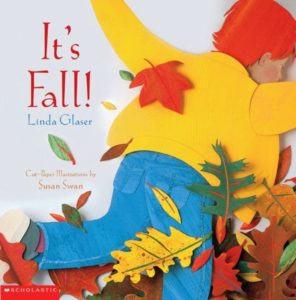
|
In Linda Glaser’s four-volume Celebrate the Seasons! Series (Millbrook Press, 2001), illustrated with bright cut-paper collages, a young narrator explains how plants, animals, and people all change with the changing seasons. Titles are It’s Spring!, It’s Summer!, It’s Fall!, and It’s Winter! Each book includes an appendix with simple seasonal projects and activities. For ages 3-6. |
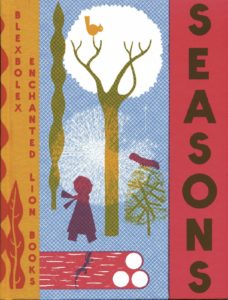
|
Blexbolex’s graphically gorgeous Seasons (Enchanted Lion Press, 2010) pairs single words (FIREFLIES, MUSHROOMS, LEAF, CATERPILLAR) with wonderful color prints that follow the cycle of the seasons. For ages 3-7. |
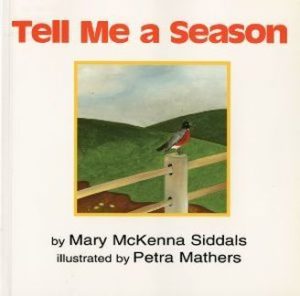
|
In Mary McKenna Siddals’s Tell Me a Season (Sandpiper, 2001), four color-coded scenes for each season of the year culminate in a picture of a little red house, with a boy, girl, cat, and dog. For example, “Brown mud/Brown trees/Sky of gray/With pink and purple clouds” lead to “Spring morning,” with pastel sunrise, bare ground, a budding tree, puddles, and kids in pajamas peeking out the window. Readers can trace changes in the landscape from page to page, as trees leaf out and the grass turns green; then pumpkins ripen, smoke comes out the chimney, and finally snow falls on a “Winter night.” For ages 3-6. |
| For activities, online games, and multidisciplinary lesson plans to accompany the book, see Tell Me a Season at the Mary McKenna Siddals website. | |
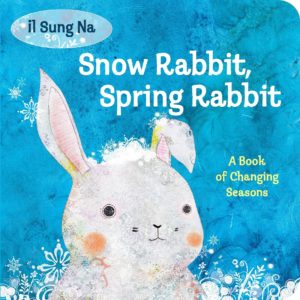
|
In Il Sung Na’s picture book Snow Rabbit, Spring Rabbit: A Book of Changing Seasons (Knopf Books for Young Readers, 2011), a fat white rabbit watches the wild animals around him prepare for winter; bears hibernate, geese fly south, turtles head for warmer water, crocodiles bury themselves in mud. Then in spring the process, bit by bit, reverses itself, and at the very end of the book Rabbit himself has turned from winter white to spring brown. For ages 3-7. |
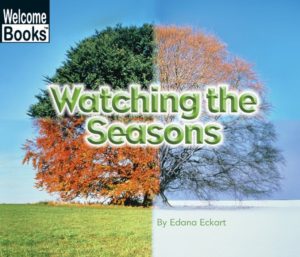 |
Edana Eckart’s Watching the Seasons (Children’s Press, 2004) is a very simple large-print introduction to the four seasons, illustrated with color photographs. For ages 4-7. |
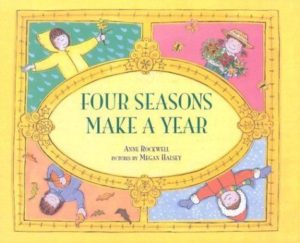
|
In Anne Rockwell’s Four Seasons Make a Year (Walker Children’s Books, 2004), a little girl on a farm – clearly a young phenologist – observes the signs of the changing seasons, beginning in spring when the first robins arrive and the daffodils and crocuses bloom. In spring, she also plants a sunflower seed and watches as it sprouts, grows, blooms, and goes to seed. For ages 4-7. |
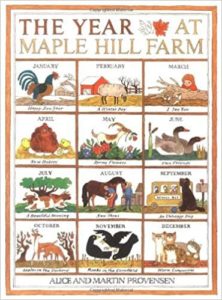
|
Alice and Martin Provensen’s The Year at Maple Hill Farm (Aladdin, 2001) is a month-by-month account of plant and animal life on the farm. Animals, the authors explain, know nothing about the calendar months, but they all respond to the changing seasons: sheep and horses grow and shed winter coats; foals, calves, and kittens are born; chicks and ducklings hatch; fields fill with insects; flowers bloom and attract bees; hay is cut. For ages 4-7. |
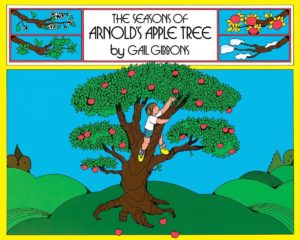
|
In Gail Gibbons’s The Seasons of Arnold’s Apple Tree (Sandpiper, 1998), the apple tree is Arnold’s special secret place. In winter, he builds a snow fort around it and hangs strings of popcorn on its bare branches for the birds; in spring, he builds a swing; in summer, a treehouse; and in the fall he rakes leaves and picks apples. Included is a recipe for apple pie and an explanation of cider-making. For ages 4-7. |
| Project Learning Tree is an award-winning environmental education program for kids from preschool through high school. Check out the free activities for families. | |
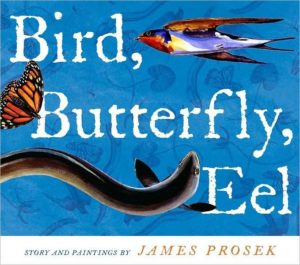
|
In James Prosek’s Bird, Butterfly, Eel (Simon & Schuster, 2009), Bird, Butterfly, and Eel all spend the summer on the same New England coastal farm, but as winter approaches, they all head out for very different places. For ages 4-8. |
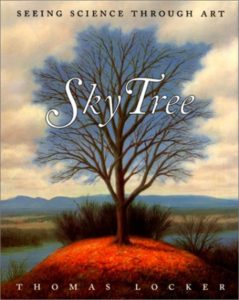
|
Thomas Locker and Candace Christiansen’s Sky Tree: Seeing Science Through Art (HarperCollins, 2001) traces a single tree through the seasons of the year, pairing Locker’s gorgeous oil paintings with a brief descriptive text. For ages 5-8. |
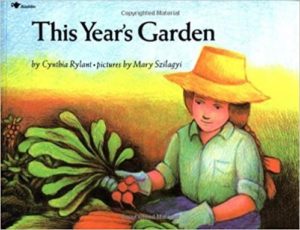
|
Cynthia Rylant’s This Year’s Garden (Atheneum Books for Young Readers, 1987), follows a family garden through all the seasons of the year, starting in winter, the planning stage, when the garden has nothing in it but brown stalks and birds, through spring planting, summer growth, and fall harvest. For ages 4-8. |
